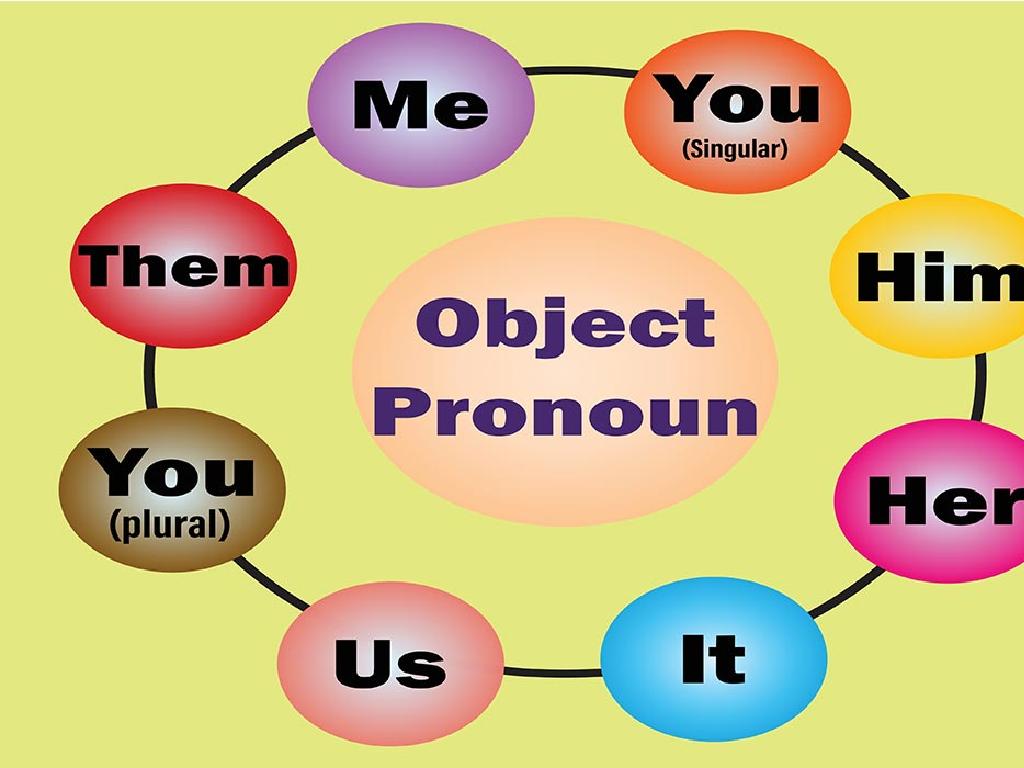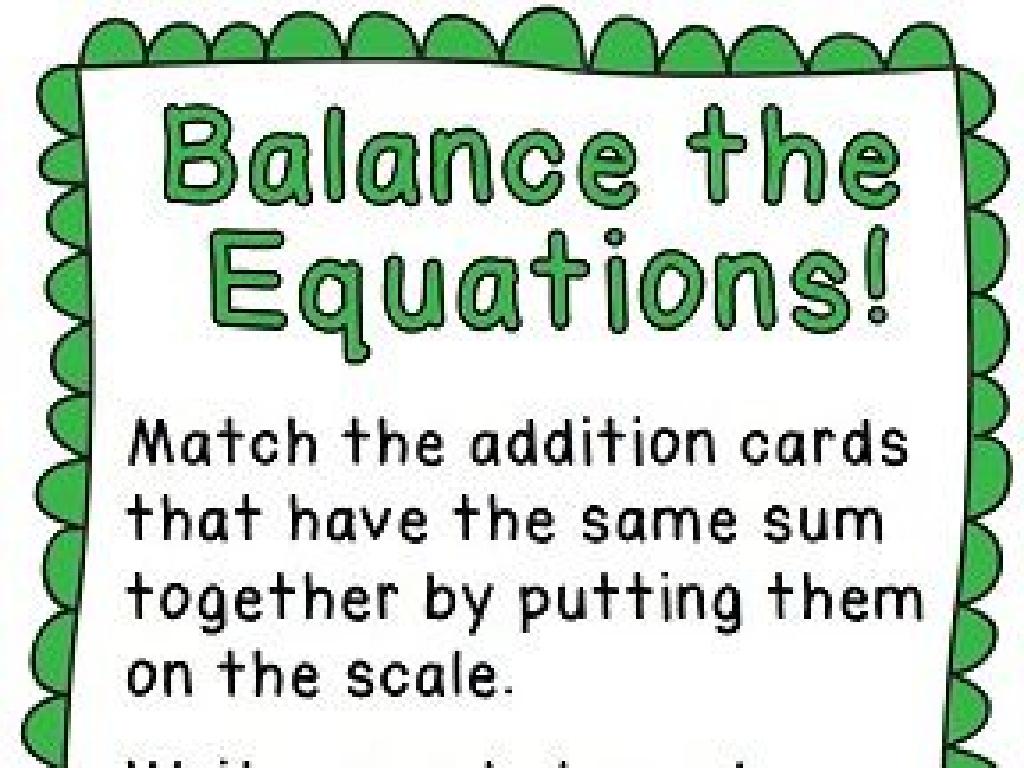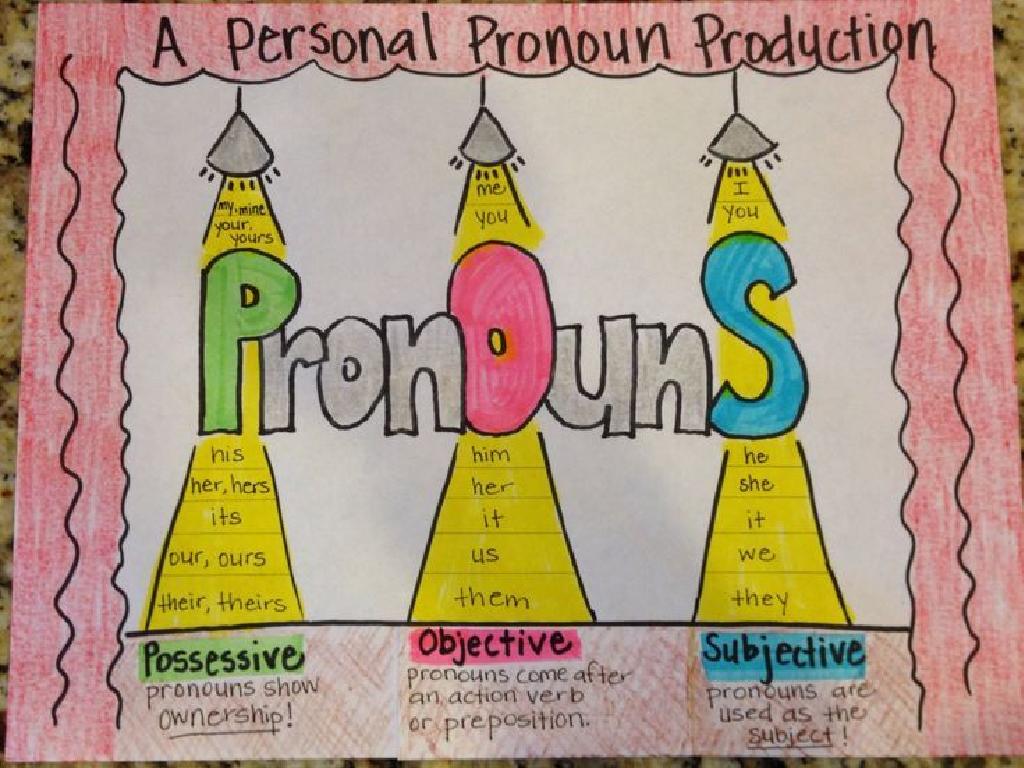Bases Of Three-Dimensional Figures
Subject: Math
Grade: Seventh grade
Topic: Three-Dimensional Figures
Please LOG IN to download the presentation. Access is available to registered users only.
View More Content
Welcome to 3D Figures!
– Explore three dimensions
– Define 3D figures
– Objects with length, width, and height
– Daily life 3D examples
– Balls, boxes, and cans are everyday 3D objects
– Recognize 3D shapes around
– Find and name 3D figures in the classroom
|
This slide introduces students to the concept of three-dimensional figures, emphasizing the transition from 2D shapes to 3D figures by understanding that these have length, width, and height. Provide clear definitions and engage students with relatable examples from everyday life, such as sports equipment (balls), food packaging (cereal boxes), and storage (cans). Encourage students to observe their surroundings and recognize various 3D shapes, reinforcing their spatial awareness. This will set the foundation for more complex topics like volume and surface area. During the presentation, ask students to name 3D figures they encounter daily to create an interactive learning environment.
Understanding the Base of 3D Figures
– Define the base of a 3D figure
– The base is the bottom surface of a 3D shape, like the floor of a room.
– Explore shapes of bases
– Bases can be triangles, squares, rectangles, or other polygons.
– Discuss the role of a base
– A base supports the figure and determines its shape.
– Examples of bases in 3D figures
– Think of a pyramid (triangle base) or a cylinder (circle base).
|
This slide introduces students to the concept of a base in three-dimensional figures. Begin by defining the base as the surface a figure stands on, akin to the foundation of a house. Highlight the variety of shapes that can serve as bases, such as polygons for prisms or circles for cylinders. Emphasize the importance of the base in determining the overall shape and properties of the figure. Use examples like pyramids and cylinders to illustrate the concept. Encourage students to identify the bases of various 3D figures and consider how changing the base would alter the figure’s structure.
Bases of Three-Dimensional Figures
– Explore cylinders, cones, spheres
– Cylinders have circular bases, cones have one, and spheres have none.
– Discover prisms and pyramids
– Prisms have polygonal bases, pyramids have one polygonal base.
– Identifying each figure’s base
– Look at the shape at the bottom or opposite the apex.
– Understanding base’s role in 3D shapes
– The base determines the shape’s stability and volume.
|
This slide introduces students to the concept of bases in three-dimensional figures. Begin by discussing cylinders, cones, and spheres, highlighting that cylinders and cones have circular bases, while spheres do not have a base. Then, move on to prisms and pyramids, explaining that prisms have two congruent, parallel polygonal bases, and pyramids have one polygonal base. Emphasize the importance of identifying the base to understand the figure’s structure, how it can stand and be measured. Use examples like a soda can for a cylinder, an ice cream cone for a cone, a ball for a sphere, a box for a prism, and a tent for a pyramid. Encourage students to bring everyday objects that represent these figures for a more interactive learning experience.
Exploring Prisms: Understanding Bases
– Defining a prism structure
– A prism has two congruent, parallel faces called bases.
– Identifying prism bases
– Bases are the ‘top’ and ‘bottom’ of a prism.
– Example: Triangular Prism
– Consists of triangular bases connected by rectangular faces.
– Example: Rectangular Prism
– Has rectangle-shaped bases and rectangular side faces.
|
This slide aims to help students recognize and understand the structure of prisms, focusing on their bases. A prism is defined by its two congruent, parallel bases. These bases give the prism its name, such as a triangular prism, which has triangle-shaped bases, or a rectangular prism, with rectangle-shaped bases. The side faces of a prism are always parallelograms. Encourage students to visualize these shapes by looking at real-life examples, such as a tent for a triangular prism or a box for a rectangular prism. Have students draw their own prisms and label the bases to reinforce the concept.
Exploring Pyramids: Characteristics and Bases
– Define a pyramid structure
A pyramid has a base and triangular sides that meet at a point.
– Identifying pyramid bases
The base can be any shape, but it’s often a square or triangle.
– Example: Square Pyramid
A square pyramid has a square base and four triangular faces.
– Example: Triangular Pyramid
A triangular pyramid has a triangle base and three triangular faces.
|
This slide introduces students to the concept of pyramids within three-dimensional figures. A pyramid is a solid with a base that is a polygon and triangular faces that converge at a single point called the apex. Emphasize that the shape of the base gives the pyramid its name, such as a square pyramid with a square base or a triangular pyramid with a triangular base. Provide visual examples if possible, and encourage students to think of real-world examples of pyramids, such as the Great Pyramids of Giza. The goal is for students to recognize pyramids and their bases in various contexts and understand their geometric properties.
Bases and Volume of 3D Figures
– Base impact on volume
– The shape of the base determines how we calculate a figure’s volume.
– Volume calculation methods
– Use the area of the base and multiply by the height for prisms and cylinders.
– Practice: Volume finding
– Calculate the volume of a cylinder with a circular base: V = Àr²h.
|
This slide introduces the concept that the shape of the base of a three-dimensional figure is crucial in determining how to calculate its volume. Emphasize that different bases require different formulas for finding the area, which is then used in the volume calculation. For example, the volume of a prism or cylinder is found by multiplying the area of the base by the height of the figure. Provide a practice problem, such as finding the volume of a cylinder, to solidify the concept. Encourage students to work through the problem and understand each step of the process. This will help them grasp how the dimensions of the base directly affect the overall volume of the figure.
Real-World Applications of 3D Figures
– 3D figures in architecture
– Buildings & structures rely on geometric bases for design and stability.
– Packaging uses 3D shapes
– Everyday items like boxes and bottles are based on 3D geometric shapes.
– Bases are key in design
– The base of a figure affects its volume and surface area, crucial in design.
– Analyzing stability and design
– Consider how a wide base affects a structure’s balance compared to a narrow one.
|
This slide aims to show students the practical applications of three-dimensional figures in everyday life, particularly in architecture and product packaging. Emphasize how the base of a figure is fundamental in the design process, affecting the object’s volume, surface area, and overall stability. Encourage students to think about how different bases would affect a structure’s balance and strength. Discuss how architects and designers must understand the properties of 3D shapes to create functional and aesthetically pleasing products and buildings.
Class Activity: Create Your 3D Figure!
– Gather materials: clay, ruler, paper
– Model a unique 3D figure
– Focus on crafting the base
The base is the flat surface a figure stands on.
– Present and discuss your creation
Explain your figure’s base and its shape.
|
This hands-on activity is designed to help students understand the concept of bases in three-dimensional figures by creating their own models. Provide each student with clay or play-dough, a ruler, and paper. Instruct them to use the materials to model a three-dimensional figure, paying special attention to the shape of the base. The objective is to reinforce the understanding that the base is the flat surface upon which the figure stands. After crafting their figures, students will share and discuss their creations with the class, describing the base and how it supports the figure. This will help them visualize and better grasp the concept of bases in 3D figures. Possible variations for student activities include creating different types of bases (circular, rectangular, etc.), comparing bases of different figures, or discussing the stability of figures based on their bases.






